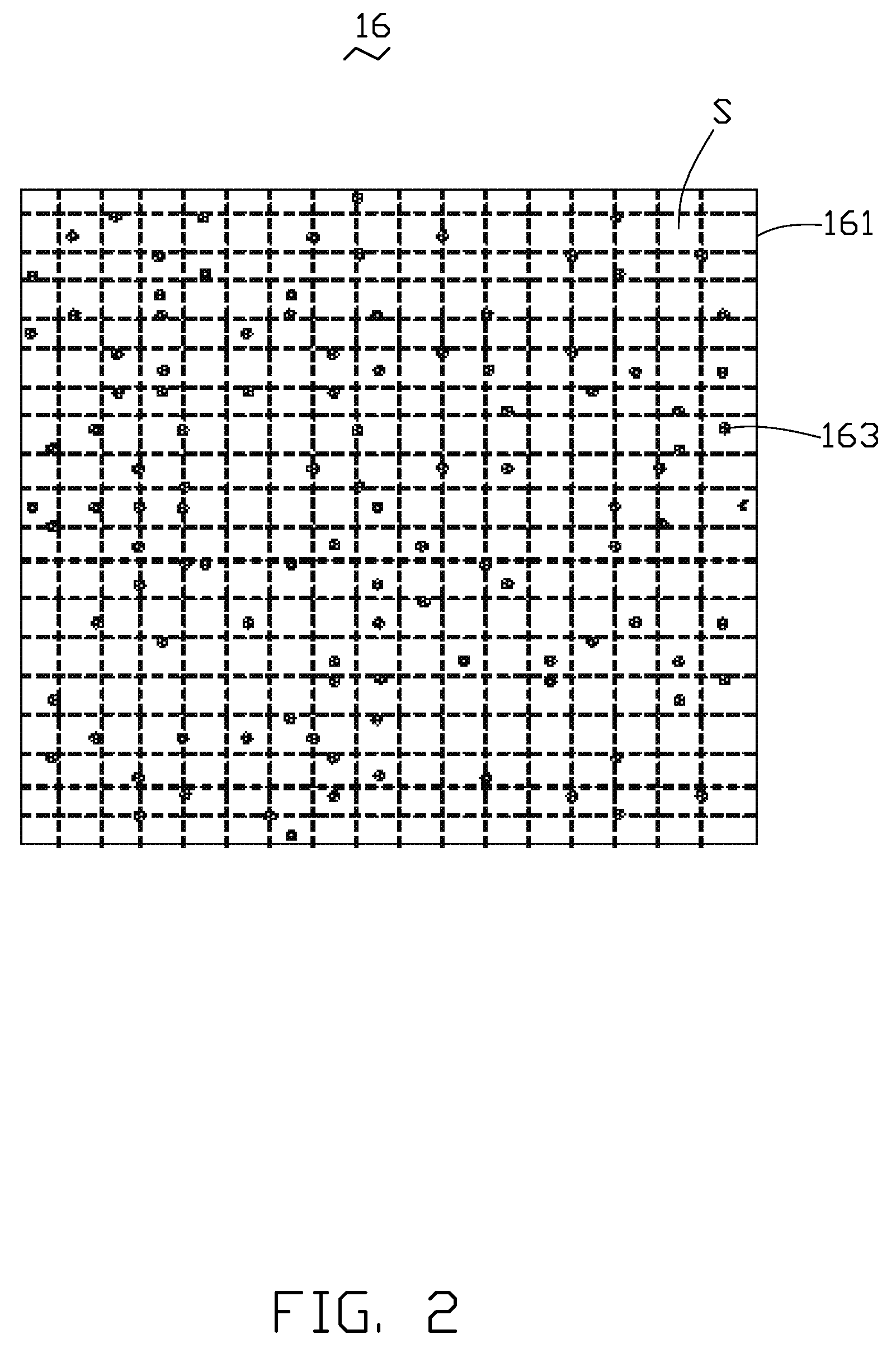Photovoltaic device
a photovoltaic and energy conversion technology, applied in the field of energy conversion devices, can solve the problems of uneven resistance distribution, low durability and photoelectric conversion efficiency of devices using transparent conductive materials, and inability to chemically and mechanically durable,
- Summary
- Abstract
- Description
- Claims
- Application Information
AI Technical Summary
Benefits of technology
Problems solved by technology
Method used
Image
Examples
Embodiment Construction
[0014]Reference will now be made to the drawings to describe embodiments of the present photovoltaic device in detail.
[0015]Referring to FIG. 1, a photovoltaic device 10 according to an exemplary embodiment, is shown. The photovoltaic device 10 includes a substrate 12, a doped layer 14, a first electrode 16, and a second electrode 18.
[0016]The substrate 12 can be made of single crystal silicon. In the exemplary embodiment, the substrate 12 is p-type single crystal silicon. In addition, a thickness of the substrate 12 is in a range from about 200 μm to about 300 μm. The substrate 12 has a front surface 121 and a rear surface 122, as shown in FIG. 1. The front surface 121 of the substrate 12 defines a plurality of cavities 123. That is, some portions of the front surface 121 form the cavities 123 for enhancing light collation and increasing the area of p-n junction formation. The cavities 123 are distributed evenly and are spaced from each other by a distance in a range from about 10 ...
PUM
| Property | Measurement | Unit |
|---|---|---|
| thickness | aaaaa | aaaaa |
| distance | aaaaa | aaaaa |
| depth | aaaaa | aaaaa |
Abstract
Description
Claims
Application Information
 Login to View More
Login to View More - R&D
- Intellectual Property
- Life Sciences
- Materials
- Tech Scout
- Unparalleled Data Quality
- Higher Quality Content
- 60% Fewer Hallucinations
Browse by: Latest US Patents, China's latest patents, Technical Efficacy Thesaurus, Application Domain, Technology Topic, Popular Technical Reports.
© 2025 PatSnap. All rights reserved.Legal|Privacy policy|Modern Slavery Act Transparency Statement|Sitemap|About US| Contact US: help@patsnap.com



